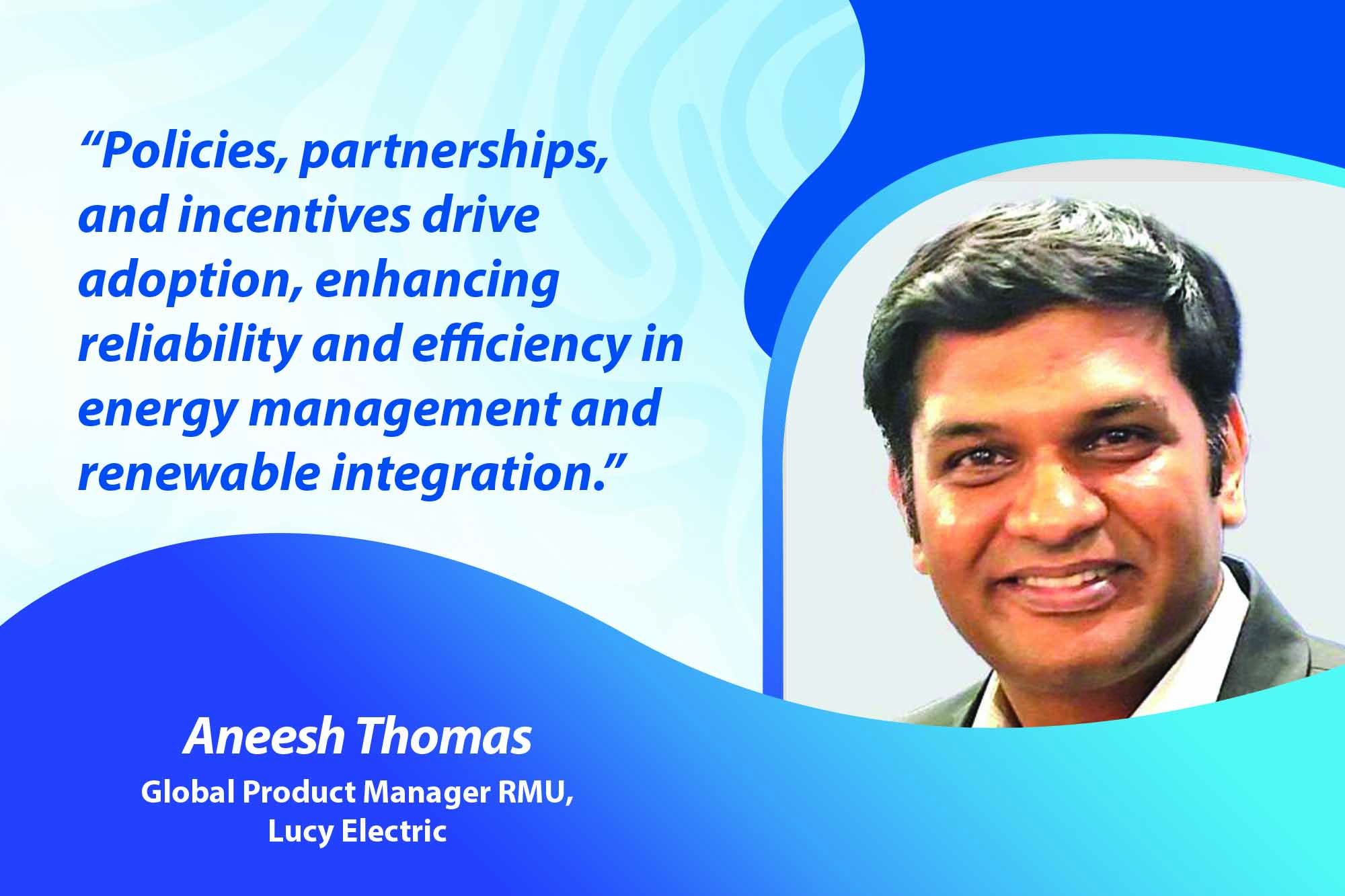Advanced switchgear for smart grids and sustainable energy solutions
By EPR Magazine Editorial June 26, 2024 11:00 am IST
By EPR Magazine Editorial June 26, 2024 11:00 am IST

Policies, partnerships, and incentives drive adoption, enhancing reliability and efficiency in energy management and renewable integration.
Spokesperson: Aneesh Thomas, Global Product Manager RMU, Lucy Electric
What measures is the Centre taking to promote advanced switchgear technologies for grid modernisation, digitalisation, and climate change mitigation?
Several policy initiatives and regulations drive India’s energy sector forward. Proposed amendments to the Electricity Act focus on promoting renewable energy integration, grid modernisation, and digitalisation. Public-private partnerships encourage private sector involvement to leverage expertise and investment in advanced switchgear technologies. Initiatives like the Green Energy Corridor facilitate renewable energy integration, requiring advanced switchgear for grid stability. Policies promoting distributed energy resources like solar rooftops and battery storage also necessitate advanced switchgear. Digitalisation involves smart meters, IoT, data analytics, and AI for enhanced grid management and efficiency.
What policies incentivise smart switchgear adoption for energy management and renewable integration?
The Indian government has implemented various policies to promote the adoption of advanced switchgear for energy management and integrating renewable sources. Initiatives like Make in India and Atmanirbhar Bharat aim to boost domestic manufacturing of smart grid technologies, including advanced switchgear, through subsidies, tax incentives, and relaxed regulations for local manufacturers. Tariff policies enforce renewable purchase obligations and time-of-day tariffs to encourage using smart meters and advanced switchgear to manage peak loads efficiently. The National Renewable Energy Policy offers subsidies, tax breaks, and low-interest loans to projects incorporating advanced switchgear, supporting targets of 175 GW by 2022 and 450 GW by 2030. The Revamped Distribution Sector Scheme aims to improve power supply quality, reduce losses, and incentivise DISCOMS to modernise infrastructure, including adopting advanced switchgear.
How do manufacturers and the government collaborate on switchgear products’ safety, reliability, and quality?Manufacturers and the Indian government collaborate extensively to ensure switchgear safety, reliability, and quality through various initiatives and regulatory frameworks. Public-private partnerships facilitate joint ventures and pilot projects for advanced switchgear technologies, combining public-sector support with private-sector innovation. Regulatory frameworks like the National Smart Grid Mission provide policy backing and financial incentives, such as subsidies and tax breaks, to promote high-quality switchgear production. Industry associations like CII, FICCI, and IEEMA foster collaboration through forums and technical committees involving government officials, manufacturers, and experts, comprehensively addressing switchgear-related issues and guiding continuous improvement efforts in quality and reliability through technological advancements.
How can the industry benefit from growing investment in renewable energy and more demand for secure electrical systems?
The switchgear industry in India stands to benefit significantly from increased investments in renewable energy and rising demand for dependable electrical systems. Expansion in renewable energy projects will sustain demand for switchgear installations while existing infrastructure requires upgrades to support renewables and boost reliability. Indian manufacturers can utilise their local expertise to expand globally, offering competitive, high-quality switchgear solutions tailored for renewable energy applications. Technological advancements are driven by renewable integration to foster innovation in switchgear, providing smarter solutions with IoT capabilities for enhanced monitoring and predictive maintenance.
What strategies can be deployed to overcome adoption barriers and encourage widespread usage?
Strategies to promote widespread adoption of advanced switchgear in India include financial incentives such as subsidies, tax breaks, regulatory mandates, and stringent standards to ensure safety and reliability. Awareness campaigns and training programmes will educate stakeholders, while increased R&D funding aims to develop tailored, cost-effective solutions. Initiatives like “Make in India” will incentivise local manufacturing, and infrastructure upgrades will support compatibility with advanced technologies. Consistent policies and streamlined approval processes will provide a stable investment environment, complemented by consumer incentives, integration, and energy programmes to encourage adoption across residential, commercial, and industrial sectors.
We use cookies to personalize your experience. By continuing to visit this website you agree to our Terms & Conditions, Privacy Policy and Cookie Policy.